Can terrorism explain the bizarre epidemiology of SARS?
SARS broke out at a time of heightened alert to the threat of bioterrorism. Incidents critical to its spread defy explanation to this day - unless terrorism is considered. Why was it not?
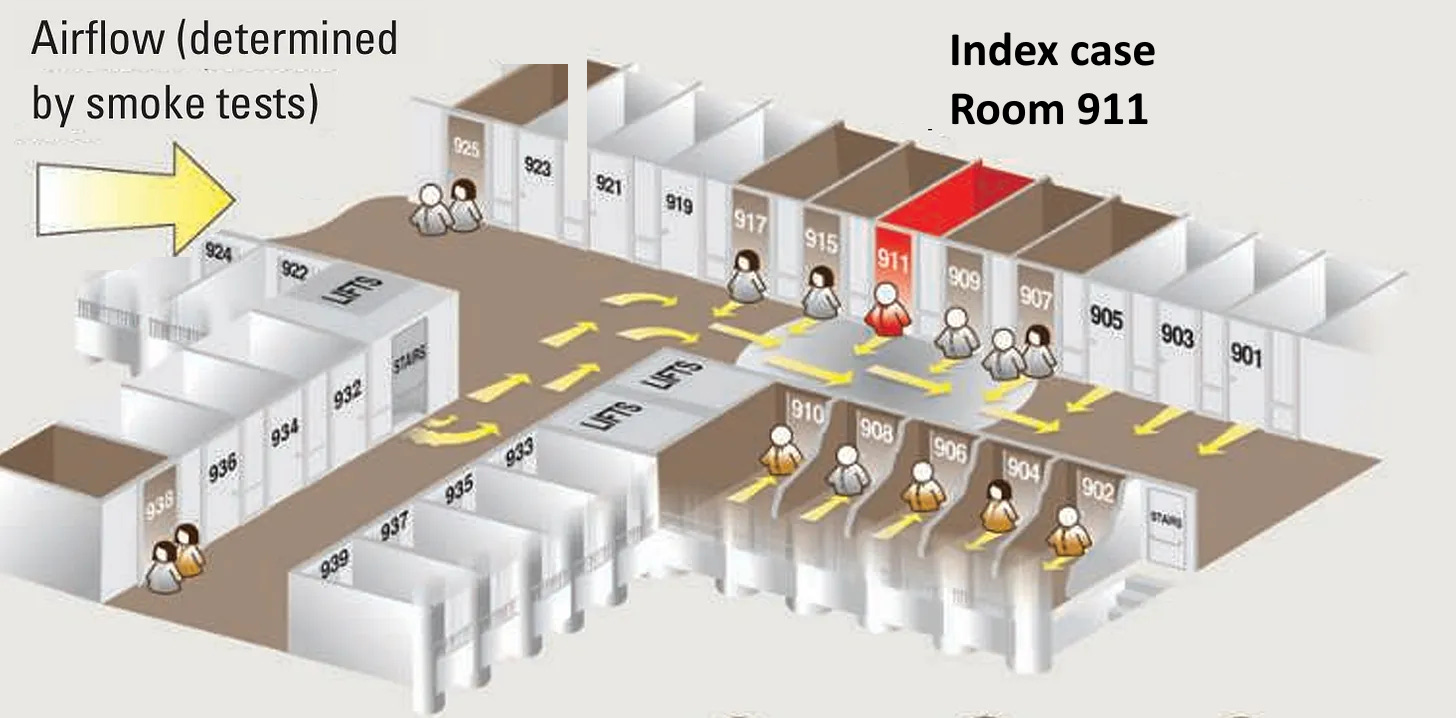
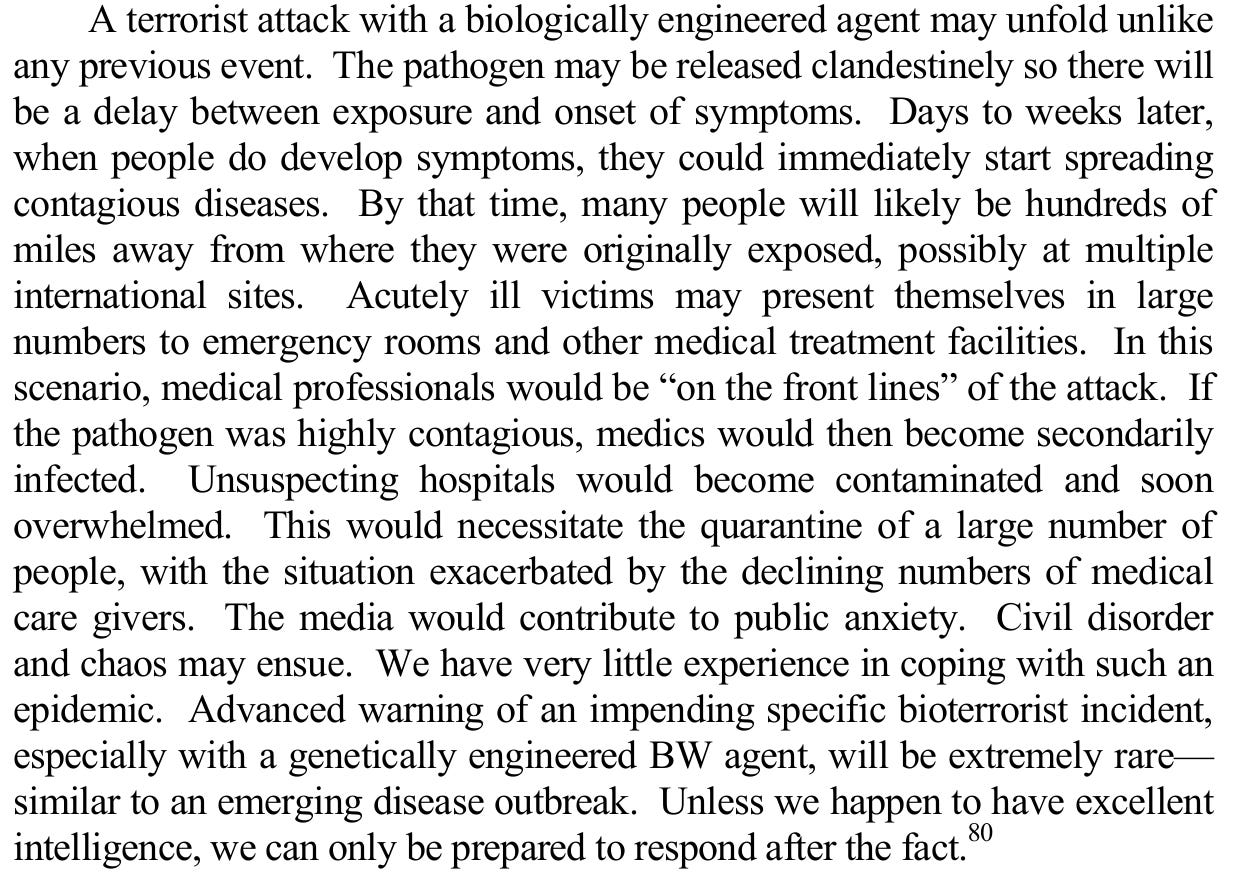
Even among “lab-leakers” who believe SARS-CoV-2 was artificial, I encounter resistance to the idea that SARS-1 was also artificial. Most are content to use SARS-1 as a natural origin baseline from which they can distinguish SARS-CoV-2. Compared to the latter it superficially appears more like a zoonosis might be expected to unfold. There are (purportedly) multiple introductions from wildlife, a known intermediate species which exists both in the wild and is farmed (civets), and a reservoir species in bats. There are problems with all of this - not least that those who established the scientific case for a natural origin of SARS-1 (particularly WIV and the Academy of Military Medical Sciences) are the same as those now under suspicion of involvement in SARS-CoV-2. Nonetheless few lab-leakers are motivated to look into it. Some of this reluctance is undoubtedly due to fear they will be labeled incorrigible conspiracy theorists
At the time SARS broke out in late 2002, the threat of bioterrorism wasn’t considered a conspiracy theory - it was very real and front of mind. It had been just over a year after the September 11th, 2001 attacks, and the anniversary raised fears of a repeat attack. 9/11 was followed - just a week later - by the anthrax letters. These were acts of bioterrorism which intentionally referenced 9/11 to heighten the psychological impact of what were otherwise low casualty incidents (just 5 deaths resulted from 22 infections). Although the FBI might argue otherwise, these attacks remain unsolved - but there is near universal agreement they are unlikely to have been the work of jihadists.
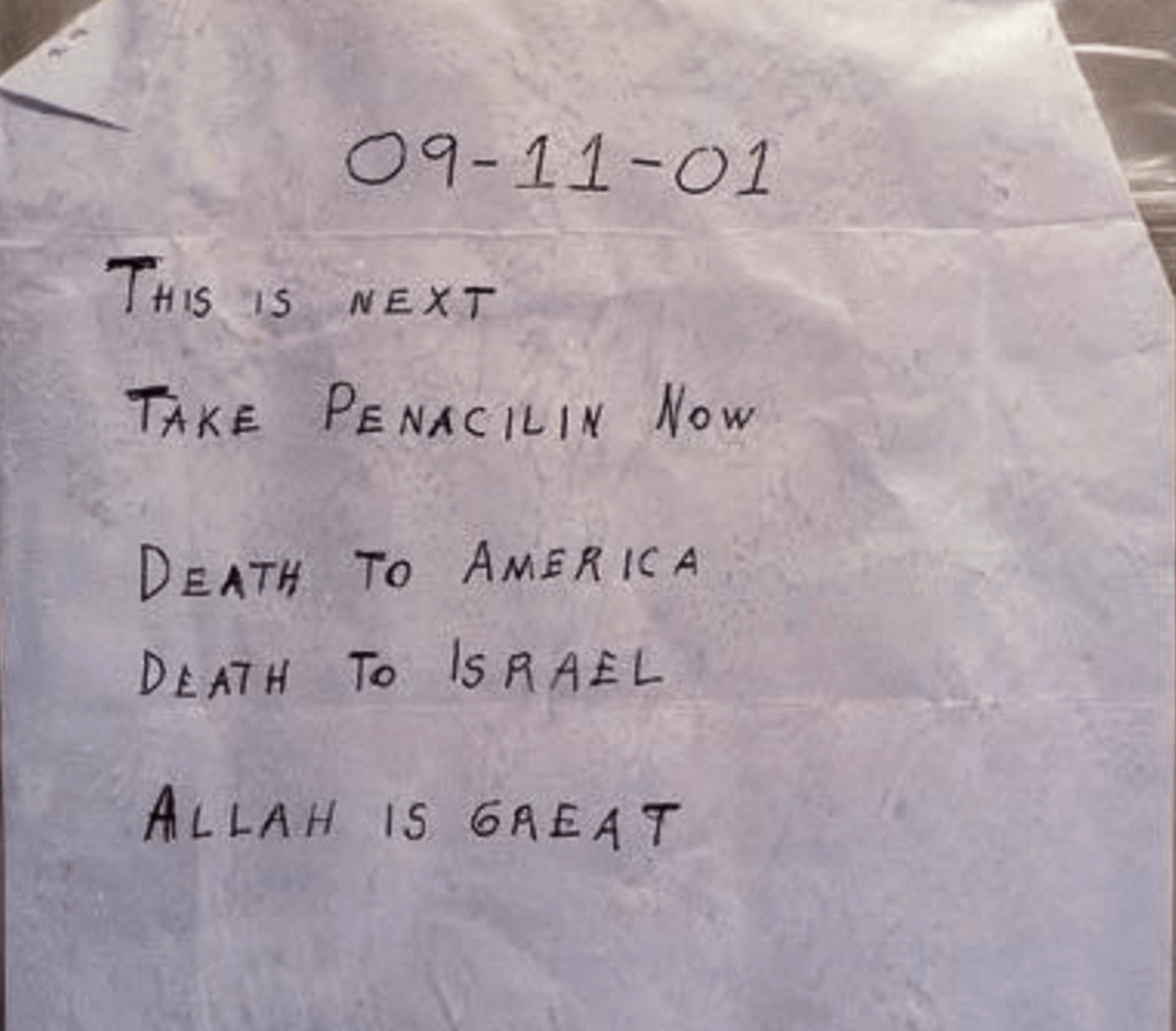
With the invasion of Iraq imminent, terror threat levels were being raised around the world. On Feb 9th, 2003, Hong Kong’s South China Morning Post (SCMP) published a piece “HK’s terror-risk elevated as war looms” noting the official assessment level had been raised from Low to Moderate. While politicians continued to reassure that the threat was low, police investigated leaflets distributed near Kowloon mosque, that were sympathetic to Bin Laden and proclaimed a “Terrorist New Era”.
Rumours of bioterrorism at a World Trade Center
Two days later, SCMP carried a story “Panic grips Guangdong as mystery pneumonia-like virus kills 6”. This mystery atypical pneumonia would later become known as SARS. Buried near the end, of the story with the suggestion that it might be “wild speculation” an incident is mentioned in which 200 people became sick and 30 died after being exposed at Guangzhou’s World Trade Center.
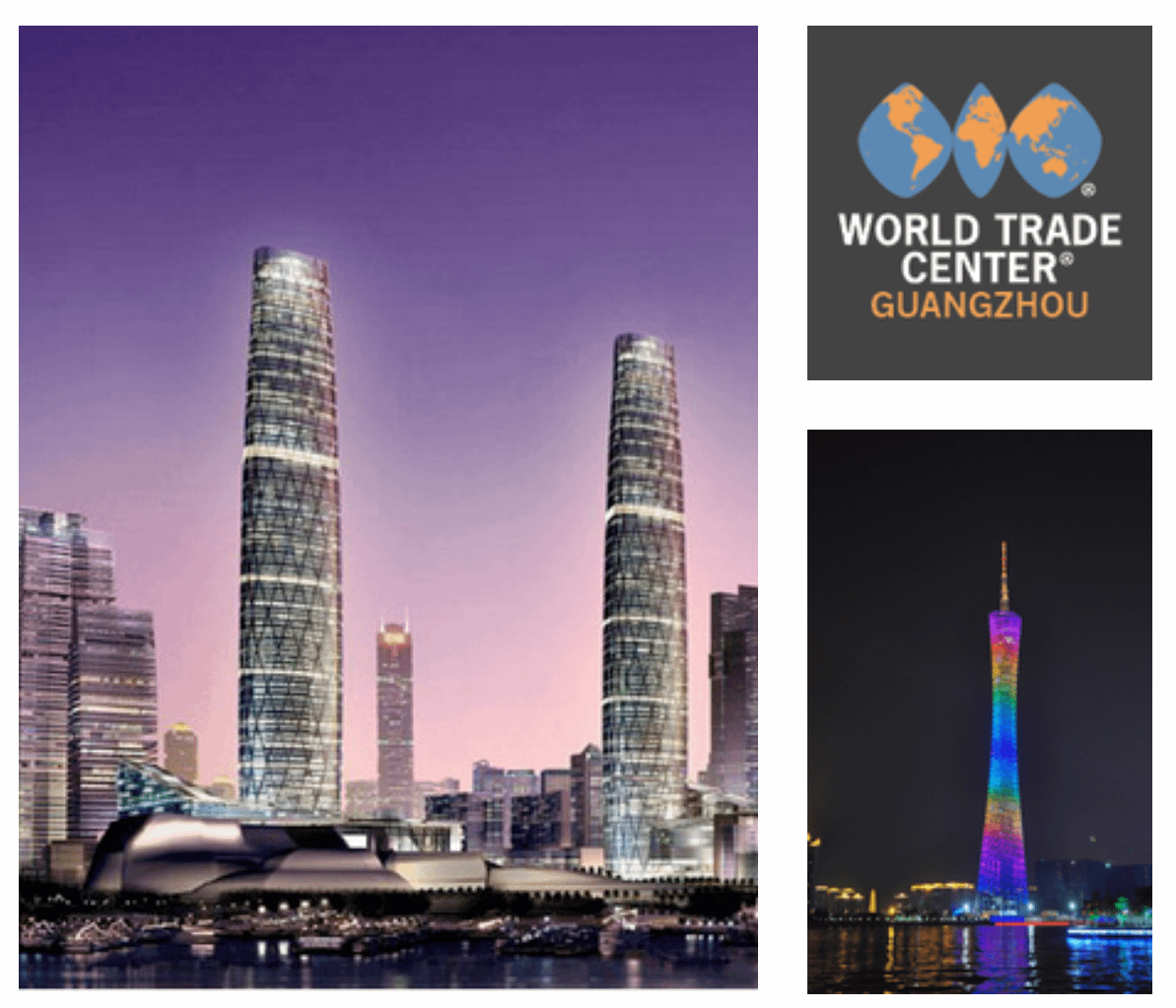
SCMP never used the word bioterrorism in their article, but a piece published in BMJ by two British expats living in Guangzhou did, describing the incident as a “rumour”.
“Another rumour was that a hundred people had been struck with the mystery illness at the World Trade Centre building in the center of Guangzhou, escalating fears of legionella or even bioterrorism. The center’s managers responded by disinfecting the whole building, and they subsequently vaporised white vinegar through its ventilation system”
But what is a rumour? In mainland China any reporting at all into the mystery disease was denounced as rumour-mongering. Early reports by local press to report on the disease were quickly taken down. Healthcare workers and officials were also kept in the dark, resulting in many needless nosocomial cases. In late January, provincial health authorities received a document labeled Top Secret from a central government health committee. For some days it sat unopened as no-one had the necessary clearance to read it. When eventually someone was found to read it, it contained information on the spread of atypical pneumonia in the province and instructions for responding to it. Hospitals were advised to be on the alert for cases, any regional cases were to be transferred to designated hospitals in Guangzhou. But in the Lunar New Year period during which many people travel, the public wasn’t to be informed.
With no official or media comment, information instead spread by word-of-mouth, text message, email - so while everything might be regarded as rumour, some was verifiably factual (such as the large number of cases among healthcare workers). These “rumours” weren’t all being circulated by superstitious peasants in rural backwaters. Guangzhou is one of China’s four Tier 1 metropolises. Wealthy professionals and expats alike were withdrawing their children from the foreign schools, causing some to close. Southern Weekly, a Guangzhou paper with a reputation for fearless coverage in the face of government censorship published an article citing data from Guangzhou Mobile, that appears to be saying the text messages contained similar or identical content, with over 40 million messages a day being sent. This suggests an orchestrated campaign to fuel fear, rather than spontaneous mass hysteria. One standard message was “Since the Spring Festival, there have been many fatal cases of influenza pneumonia in Guangzhou, and several patients have died in several hospitals”. Whether or not intended, the effect was to deter people from attending hospitals (the first place Chinese people go for medical treatment). In April the editor-in-chief of Southern Weekly was removed and replaced with an official from Guangdong’s propaganda department. In May, Southern Weekly was accused of having published “state secrets” related to SARS. Days later authorities claimed to have implemented a tracking system to catch “rumor mongers” sending mass text messages about SARS.
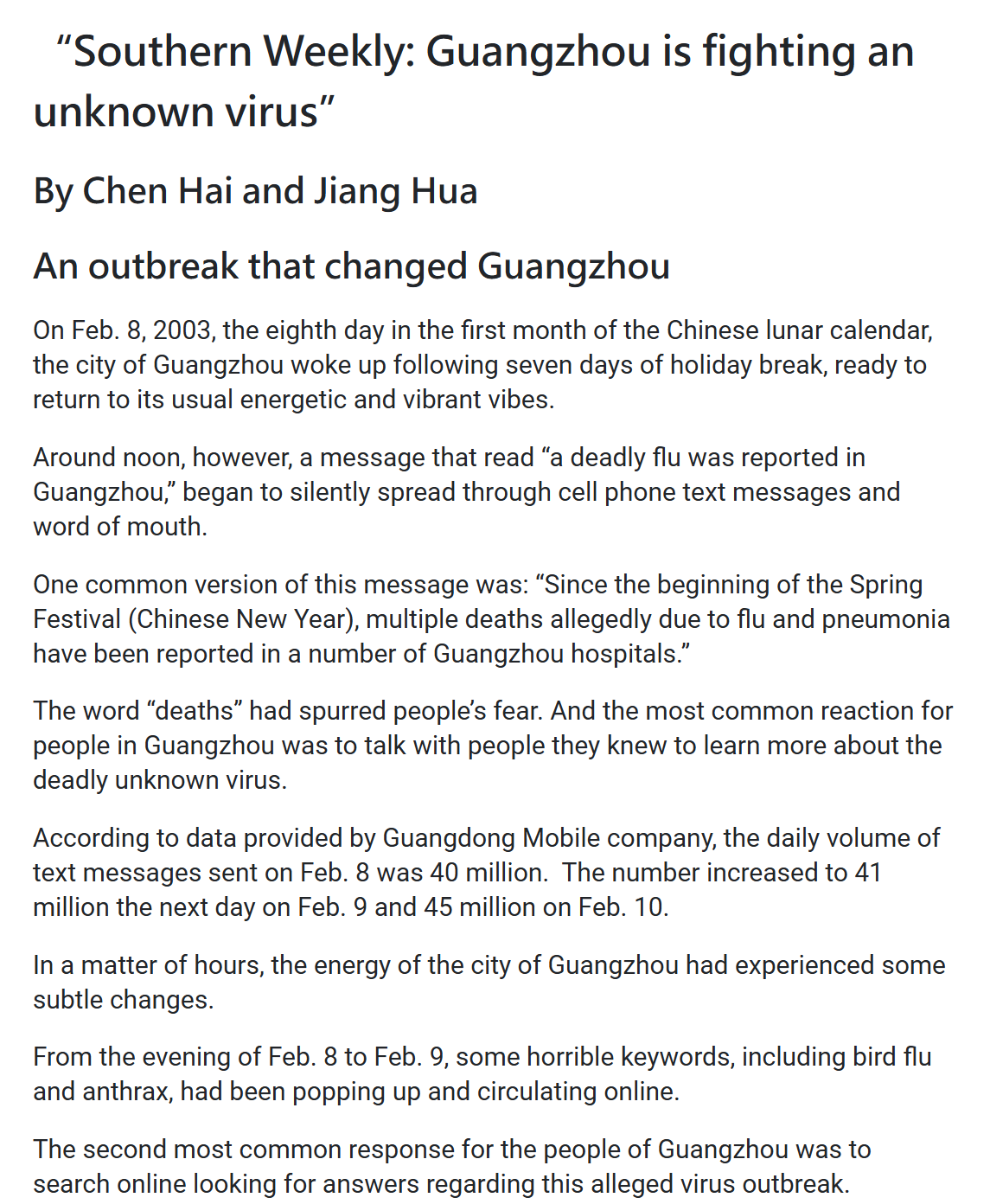
The WHO office in Beijing received a report from an expat in Guangzhou suggesting that 100 people had died in a single week of this mystery illness. This appeared to be confirmed by Guangzhou City Health Bureau who on February 11th issued a press release announcing 100 deaths of atypical pneumonia. Later the same day this was contradicted by China’s Ministry of Health. They announced that 305 cases of an atypical pneumonia had been recorded, resulting in just 5 deaths. More than 100 of these cases were in health care workers. The pathogen was still unknown, but wasn’t anthrax or avian influenza. Guangdong’s provincial health department added that it was under control, case numbers were falling, and the disease was not as serious as rumored.
It is important to understand that the mode of transmission of SARS was - in most cases - by larger respiratory droplets (released by coughing) or fomite (mouth-hand-mouth), and required the source to be symptomatic. This is unlike SARS-CoV-2, which is often transmitted by aerosol, even from asymptomatic cases. These attributes account for the vastly different scale of the epidemics. While SARS traveled to 31 countries, only ~8500 cases were ever documented. Many cases likely went unrecorded as they were asymptomatic, but even assuming tenfold higher case numbers doesn’t radically alter the picture. There have been perhaps a billion or more SARS-CoV-2 cases, and it continues to transmit in nearly every country. SARS was completely extinguished from the world within months. Nosocomial transmission was a problem at first, but with awareness and basic infection controls implemented, SARS wasn’t difficult to bring under control. This feat was repeated in countries around the world. Spread within the community was also limited, close contact was needed, many cases transmitted no further even when undetected.
But there are a handful of “super-spreader” incidents in which airborne transmission of SARS does occur. These are critically important to the epidemiology - particularly the spread to other countries. The Guangzhou WTC may have been the first of these (if we could be certain it happened). But even if it was only a rumour, that in itself is interesting. Was that rumour planted for a reason? Why the World Trade Center, was it a deliberate attempt to link it to September 11th? On its own alone, it may have just seemed a coincidence, or perhaps a symptom of mass hysteria. But the next major super-spreader incident would have a verifiable link to 9/11.
What happened outside Room 911?
On 21st February, Dr Liu Jianlun, a retired professor from Sun Yat-Sen Medical University in Guangzhou travelled to HK for the wedding of a nephew. At 5pm he checked into Room 911 of Kowloon’s Hotel Metropole. Although a few contemporary media articles mentioned the room number, none assign any more meaning to it than a curious co-incidence. But it is a very unlikely coincidence - the Hotel Metropole had 487 rooms.
During Liu’s overnight stay he managed to infect 20 other people on the 9th floor with the mystery disease. Five subsequently died, and some went on to seed outbreaks in Singapore, Vietnam, Canada and elsewhere in Hong Kong. In all, over 4000 cases have been traced back to his brief stay at the Hotel Metropole. But just as curiously, no-one else in the hotel was infected, guests on other floors or in the lobby, or even the staff who cleaned his room.
The WHO sent a team of Canadian environmental forensic specialists to investigate. They found traces of SARS genetic material in an air-conditioning inlet, and high concentrations on the carpet outside the door to Room 911 and adjacent rooms. They found no trace inside any of the rooms however, and ascertained using a smoke plume that there was a positive air pressure differential between the rooms and the hallway. Air flowed out of the rooms, not in. One clear conclusion was the spread had been via aerosol and had occurred in the hallway. But how could this have happened?
The best explanation they could concoct is that perhaps he had vomited in the hallway and staff had used a vacuum cleaner to clean it up, in the process aerosolizing it. But hotel staff hadn’t reported any such incident, the vacuum cleaner on the floor was found to have no trace of SARS, and no staff became ill. The incident remains officially unexplained, despite then HK Health Director Margaret Chan’s unlikely suggestion that “perhaps they all stood outside the elevator at the same time and somebody sneezed or coughed”.
One plausible explanation is that the incident was terrorism - but this was never considered or investigated. Although the 911 link may seem spurious, the recent bioterrorist incidents (anthrax) referenced 911, as did the Guangzhou World Trade Centre “rumour”. Moreover, it is easy and parsimonious to explain so many people getting sick at once - but only on one floor - if an artificially aerosolized viral isolate was used.
SARS may have been the wrong weapon for causing psychological terror - at least in the short term. If Sarin had been used instead, the floor might have been strewn with corpses and there would have been little doubt over the nature of the incident. But the only immediate impact was that the next day an old man took himself to a nearby hospital with symptoms of atypical pneumonia. It would be weeks before the pathogen was identified, and months before the full trail of devastation was traced back to Room 911. By then the perpetrators would have second thoughts about wanting the incident to be identified as terrorism. A natural origin narrative would instead be promoted.
The time lag also meant that several key witnesses weren’t interviewed - or not thoroughly, as they might in a criminal or terrorism investigation. Liu himself was only capable of giving a brief account before being put on a ventilator and taken to ICU. He told staff he was a retired professor, who had been working as a volunteer in a clinic attached to the university hospital. There he had come into contact with two patients with symptoms of atypical pneumonia. He had experienced mild flu-like symptoms himself a week earlier, but had fully recovered before traveling. He had taken a chest X-ray of himself and was convinced he hadn’t had atypical pneumonia but a regular seasonal flu. The day of traveling he had felt fine, had a long banquet lunch with his sister’s family before checking into the hotel.
But to someone relying on transcripts years later, many questions come to mind, which - frustratingly - may never be answered. It is never explained why Liu’s wife returned to Guangdong so quickly, leaving him to die alone in ICU. Why did three visitors purporting to be old colleagues there to pay their respects, ask for his test results, leave and never again check-up on his well-being? Why did his sister refuse to co-operate with contact tracers? Although there was a subsequent Legislative Council enquiry which took witness statements, this was primarily for the purpose of evaluating the performance of the health system. There was nothing that resembled a police investigation.
On March 15th, SCMP ran a story headlined “Terror scenarios help HK to prepare”. This piece acknowledged that bioterrorism was one scenario being prepared for “multinationals, financial houses, international schools and embassies” under a predicted surge in terror attacks if/when the Iraq invasion went ahead. This would be the last time the word bioterrorism appeared in any SCMP article for many years to come. Yet that very day the mystery pneumonia struck 24 passengers on a traditional terrorist target - an airline passenger flight.
SARS gets airborne on Flight CA112
SARS might be more notable for the number of flights that didn’t result in transmission, than those that did. The WHO retrospectively investigated 35 flights on which known SARS cases travelled and found that only 29 secondary infections resulted in total - further evidence if needed that SARS usually doesn’t transmit by aerosol. But of these 29 cases, 24 resulted from just one flight: China Airlines Flight 112 from Hong Kong to Beijing on March 15th, 2003.
The flight from Hong Kong to Beijing is only 3 hours, not considered long enough to contract most respiratory infections (such as tuberculosis - which is considered a risk on long haul flights - albeit a very small one). The presumed index case, Mr LSK, a 72 year-old Beijing resident returning home, later died, as did 4 others who were infected on the flight. Passengers were infected many rows away, and across the aisle, while 6 of the 8 seated directly next to, in front and behind him - were not.
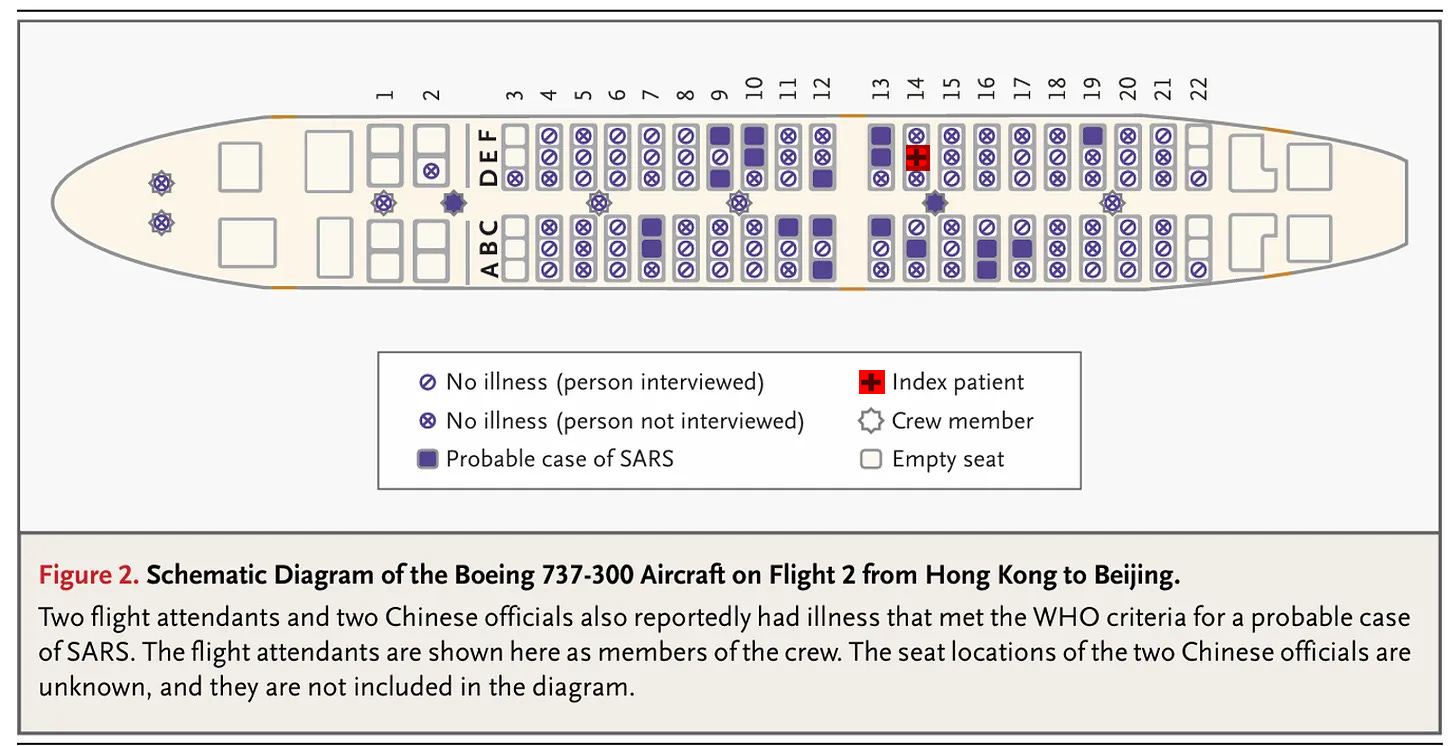
The passengers who contracted SARS on the flight included several Taiwanese businessmen in transit, one of whom went on to seed a new cluster there (the first Taiwanese SARS case was recorded a day earlier). Ten of the victims came from one Hong Kong tour group. They all returned home together on the same flight, interestingly, no-one else on that flight was infected. Mr LSK went on to infect family members and hospital staff, starting a new cluster in Beijing. An Inner Mongolian flight attendant was infected and on her return home seeded a cluster of 300 cases. Two Chinese officials were also on the flight though their seats aren’t identified on the manifest. They traveled on to Thailand where one of them developed severe symptoms and was hospitalized. Still sick, he checked himself out of hospital and on their return trip infected the first foreigner to die of SARS in China, a Finnish expat living in Beijing.
All five transmissions that occurred on flights other than CA112 resulted from direct contact with a source case - from passengers seated directly adjacent or contact with a flight attendant during meal service. On CA112, transmission can only have been via the airborne route. The pattern of infections has little correlation with the seat locations. It is another incident that defies simple explanation - other than terrorism. But again, if the goal was to induce terror, the dispersal of the victims and delay in symptom onset lessened the psychological impact. There was no immediate body count for media to report. While Flight CA112 led to hundreds of cases and many deaths, this was only possible to establish retrospectively after the pathogen had been identified and contact tracing completed. The next incident would be an order of magnitude larger, and this time would inflict serious psychological and economic damage to Hong Kong.
If there is symbolic meaning that can be read into this incident it was perhaps aimed at a Chinese audience, not the West. March 15th, 2003 was also the day Hu Jintao was elected President of China at the National People’s Congress. This was a foregone conclusion, he had been named General-Secretary of the Communist Party in November, 2002 (11/2). Hu didn’t immediately assume leadership of the Central Military Commission - and thereby control of the PLA. In a negotiated power-sharing arrangement, his predecessor Jiang Zemin retained that position until he voluntarily resigned in September, 2004. Chi Haotian, a close ally of Jiang, did step down as Defense Minister at the conclusion of his 10-year term but remained influential. Chi and Jiang implemented the hardline response to Tiananmen Square, while Chi has been credited with a speech calling for the use of bioweapons in a future invasion of the USA.
The scale of the SARS outbreak in Beijing was concealed by the PLA. Case numbers in military hospitals weren’t disclosed to civilian authorities, including the Ministry of Health. When WHO inspectors visited two military hospitals in Beijing, SARS patients were moved temporarily to a hotel, and returned later that evening. While the Health Minister and Mayor of Beijing were later sacked over the cover-up, no PLA officers faced consequences.
From Aum Shinrikyo to Amoy - a copy-cat apartment attack?
The Amoy Gardens housing estate comprises 19 high-rise towers each of 30-40 floors. The official story (which changed several times during the course of investigations) is that a 26 year-old Shenzhen man with kidney disease traveled regularly for dialysis at Hong Kong’s Prince of Wales Hospital, where he may have acquired the atypical pneumonia. He sometimes stayed overnight at his brother’s apartment in an Amoy Gardens tower. On the 21st March while visiting, he had diarrhea. When he flushed the toilet, virus-laden feces became aerosolized. Due to a faulty plumbing system these aerosols were carried into neighboring apartments. Ventilation systems further transmitted the plume.
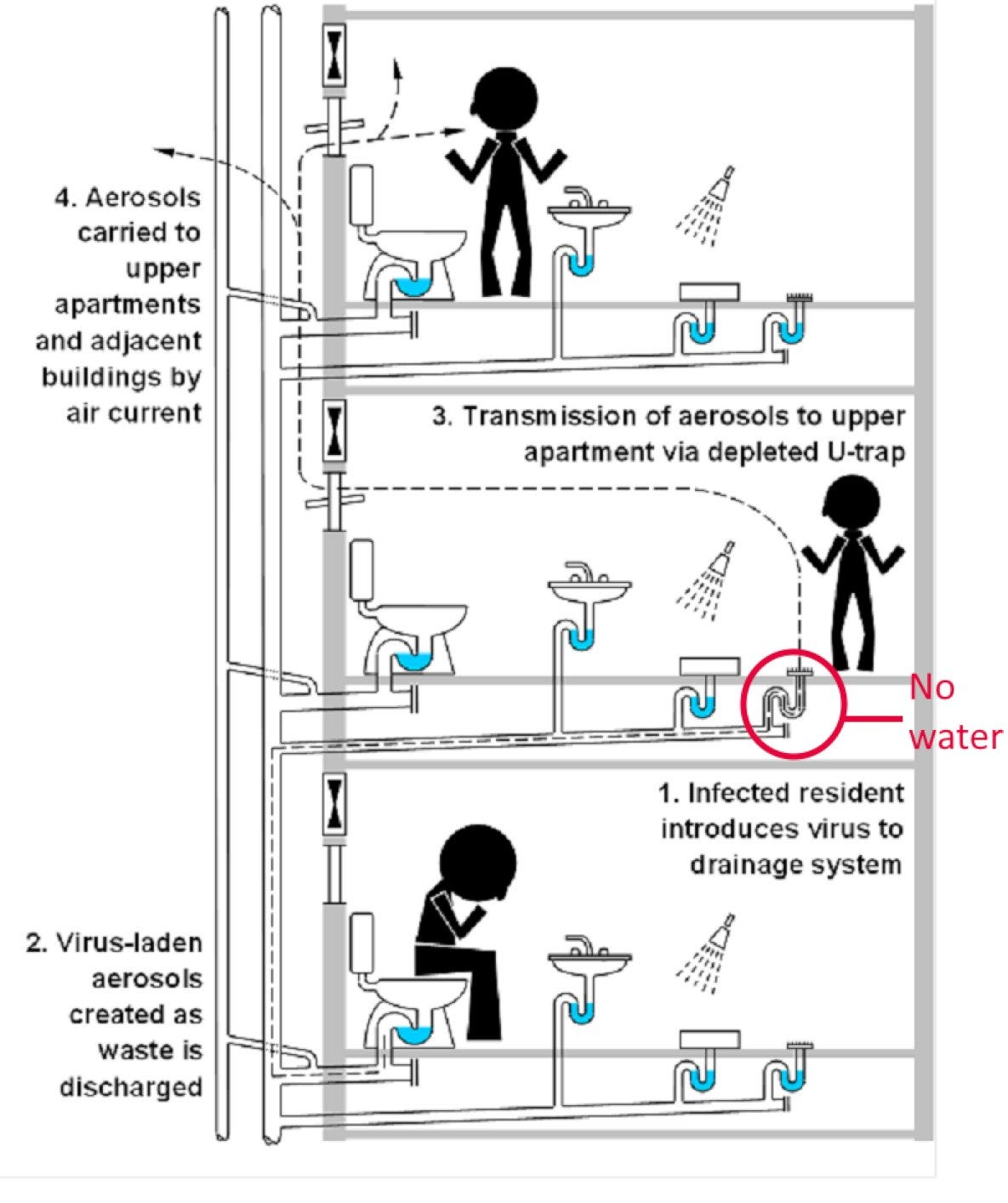
Although this seems a plausible way that he may have transmitted to a handful of close neighbors, the total infected from this single event was over 320 people, scattered among 15 tower blocks. This requires not only that the disease could survive in feces, but fecal aerosols can transmit to the respiratory system, outdoors in a breeze, for distances of up to 100m. There is no known pathogen with such capability (thankfully). Authorities then suggested the infections in other tower blocks were secondary transmissions, acquired from contact in common areas of the estate. But the date of symptoms onset in all the towers was so similar, this explanation was also ruled out
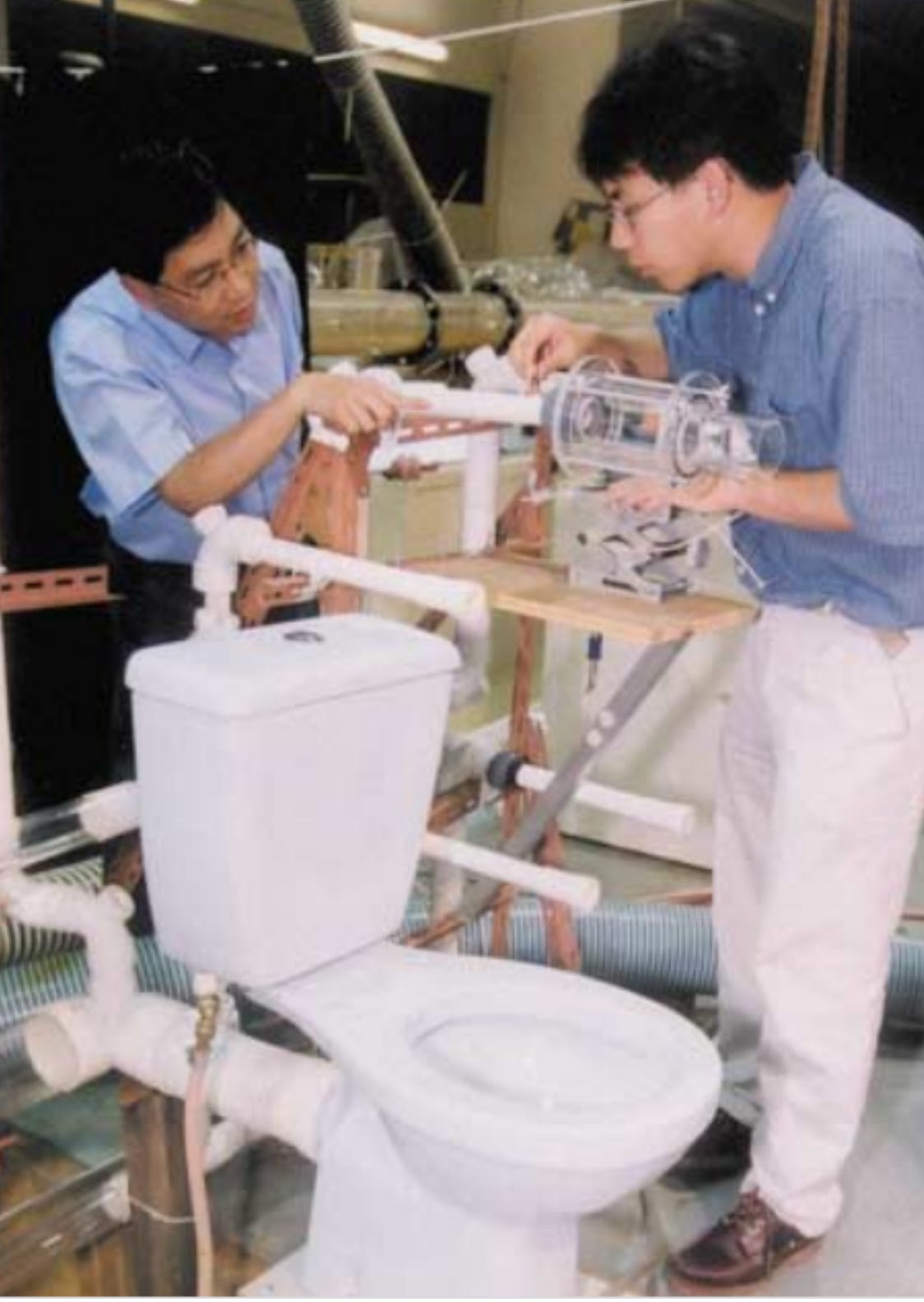
Academics from China University Hong Kong thought the spread to other towers may have been by an animal vector - rats or cockroaches perhaps. Fur samples taken from rats were found to have traces of SARS, but rats themselves weren’t infected. Cockroaches were also ruled out. And again, it seems unlikely this explanation could account for the closeness of the dates the infections must have occurred, or the pattern of infections, some cases only occurred at high levels in different tower blocks. The Department of Health was criticized for keeping the official report with the locations of cases secret.
Adjacent to the estate was a high-rise construction site. One of the workers became a SARS case. Authorities discovered that the site had no toilets, workers were found to be just using the ground. There is a prevailing breeze towards the tower blocks. But it’s still impossible to believe hundreds of infections could result as far as 100m downwind.
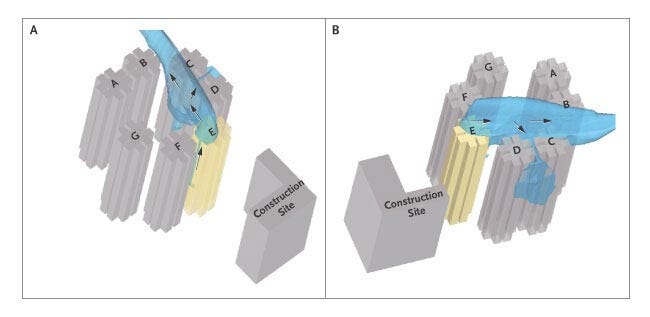
A bioterrorism attack at Amoy Gardens may have taken inspiration from Aum Shinrikyo’s 1994 attack on the town of Matsumoto. In this less well-known incident, the cult used an improvised aerosolization device installed in the back of a converted refrigeration truck. The main components needed are a heater, pump and fan.
They parked in an empty carpark downwind and relied on a gentle prevailing breeze to waft a cloud of aerosolized Sarin into the windows and air-conditioning inlets of residents of a housing compound, killing 8 and injuring hundreds before driving away. The Matsumoto attack wasn’t immediately recognized as bioterrorism. It was blamed by police on a local resident who liked to mix his own fertilizers and pesticides (despite that it was impossible to produce Sarin from the chemicals he had). It was only after the devastating attacks on the Tokyo subway a year later that the true nature of the incident was established.
Aftermath and Enquiry
At a politburo meeting on 18th April, 2003 the Chinese government approach to SARS changed dramatically. No longer was the spread of SARS to be concealed and allowed (if not encouraged) to spread, it became a patriotic struggle to suppress the epidemic. Officials were chastised for having previously covered it up. A hand was extended to the rebellious province of Hong Kong, PPE and other medical supplies were sent. Scientists from HKU were invited to the mainland to help trace the cause of the outbreak. They very quickly reported sequencing a very close virus in samples swabbed from civet cats in a wildlife market. The PLA Academy of Military Medical Sciences had conveniently already sequenced a virus from a human patient sample with a similar genetic signature to the civets. Although it was far from the end of the scientific investigation into the origin, this seemed to prematurely cement in many minds that the cause was natural. I argue that the key evidence for this is fraudulent.
Hong Kong’s Legislative Council held an enquiry into the epidemic. HK at the time still clung to democratic traditions, so there were differing views presented, criticism of officials was tolerated, some transcripts were made available - but not all. A typical excuse (sadly also used in western countries) was to withhold documents on “privacy” grounds. Although he had long since died, Dr Liu’s room number 911 was redacted from official transcripts, along with his and other names.
There were debates between academics and the authorities over incidents like the Amoy Gardens, but the official report was withheld, even from interested experts. The WHO played some role behind the scenes and their investigators produced some intriguing revelations and raised eyebrows, but ultimately the reports they produced go out of their way to avoid conflict with official accounts. One WHO document claims terrorism had been “ruled out” by Margaret Chan - but it’s unclear on what basis since there are no references to the possibility of terrorism in any public document.
Margaret Chan was subsequently sponsored by the PRC government in her successful quest to become WHO Director-General. Her handling of SARS was criticized by elements of the media - notably Apple Daily (whose proprietor Jimmy Lai is presently in solitary confinement awaiting charges that could see him jailed for life). A particular criticism was that she pandered to mainland authorities and didn’t push them for crucial information on the situation in Guangdong. She had also been reluctant and slow to inform the public of the situation, justifying this as having to balance the impacts to business and tourism. She reportedly told a colleague that she had been privy to otherwise secret information from the mainland all along - as if that should allay their concerns.
As WHO Director-General, Chan would later deflect calls for an enquiry into the possible artificial origin of SARS (that will be the subject of a future article).






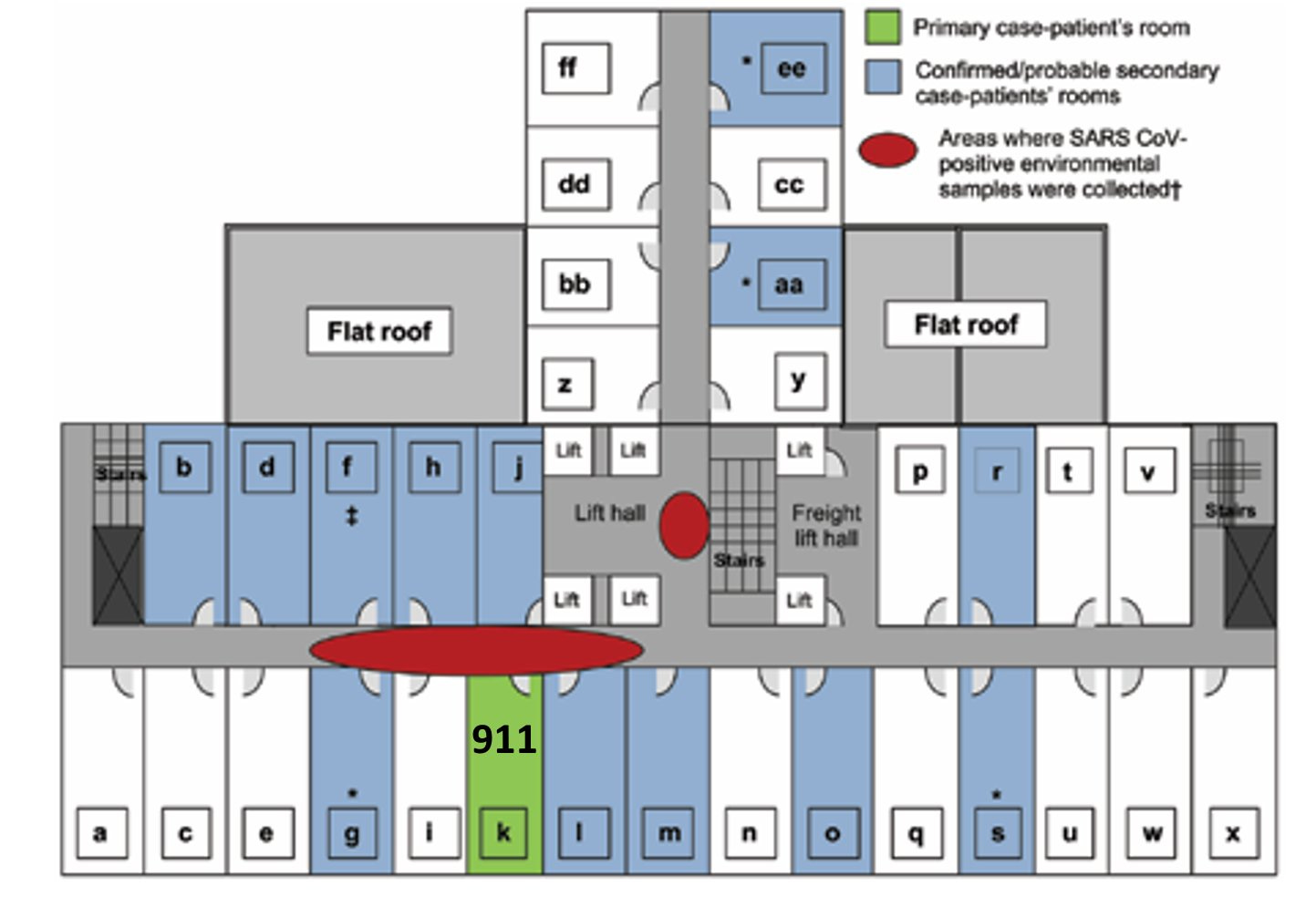
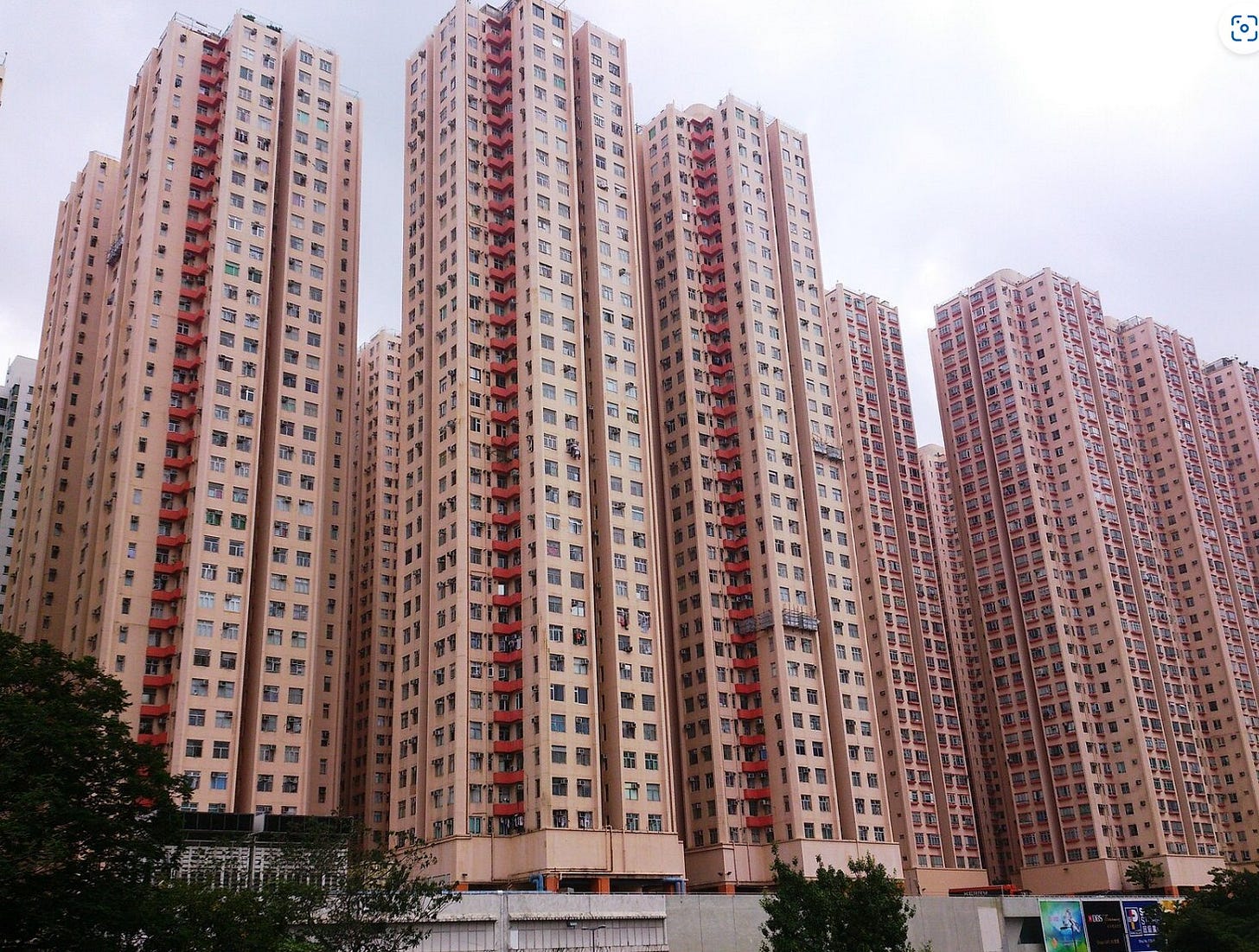
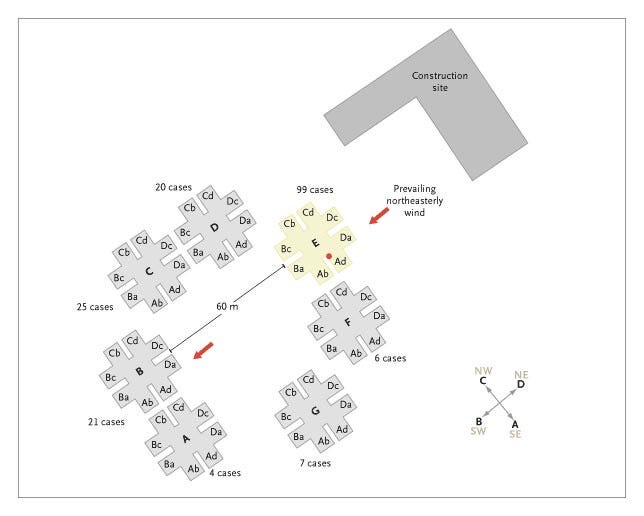

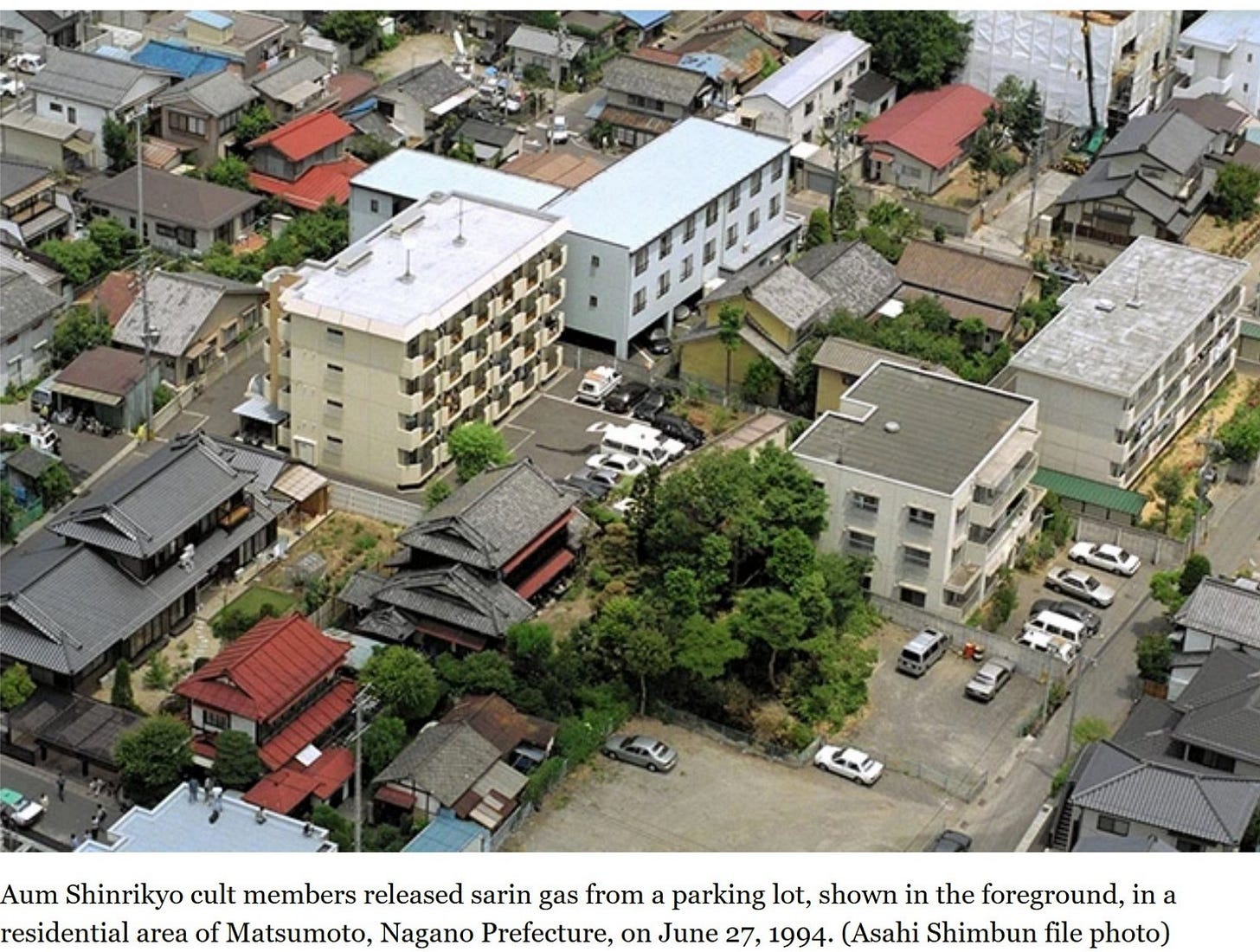
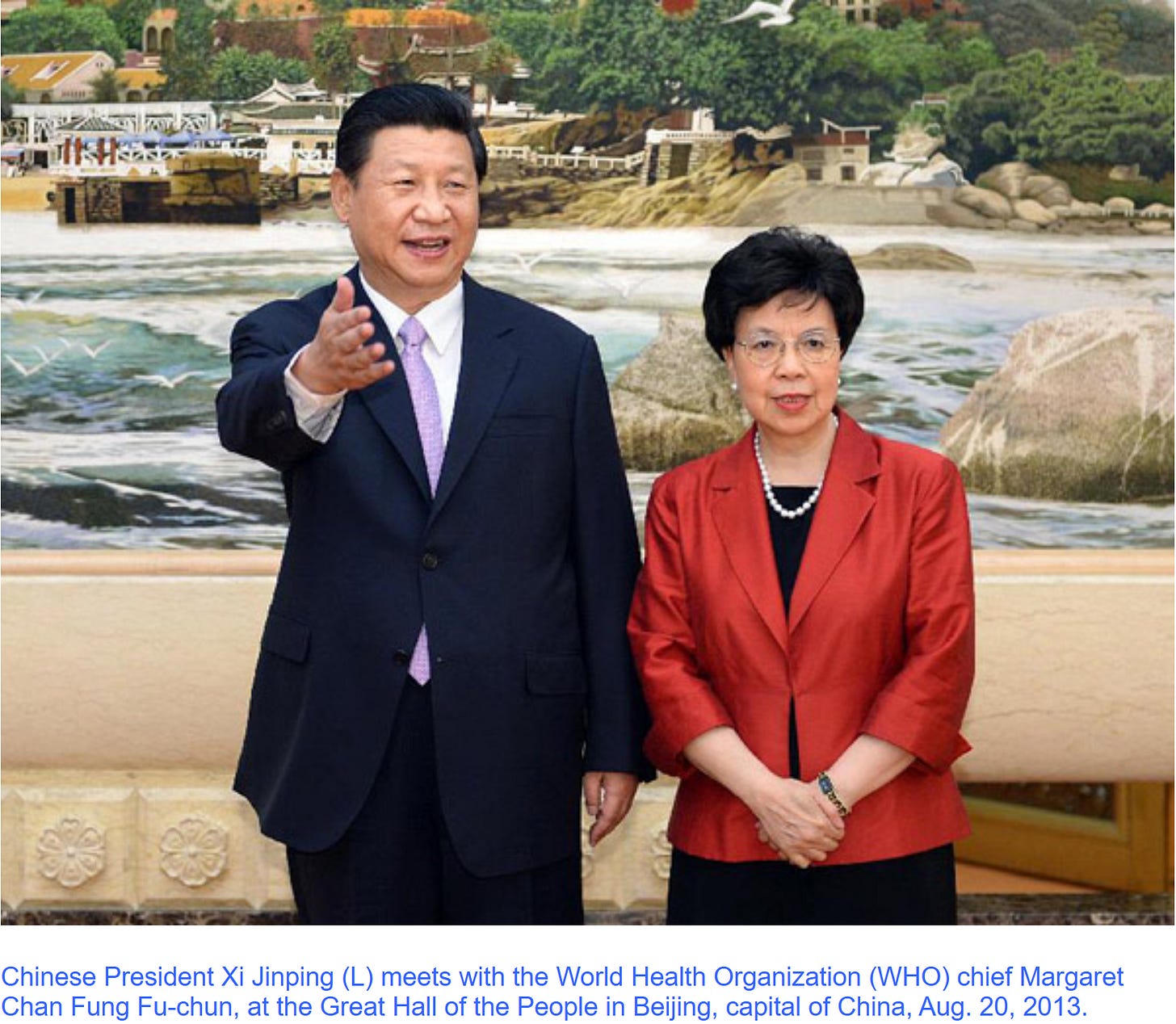
Thanks for a very interesting read. Lots of information that was new to me. If you haven't already, maybe you'll consider including mention in an upcoming article of the theory proposed by Zhong et al -where there were two strains of SARS, one more virulent and severe which died out quite quickly; the other milder and potentially able to circulate quietly for an extended period.
Do you know if it was even possible to aerosolize something like a coronavirus in 2002 and make whatever did it travel sized? Who would have such capability?